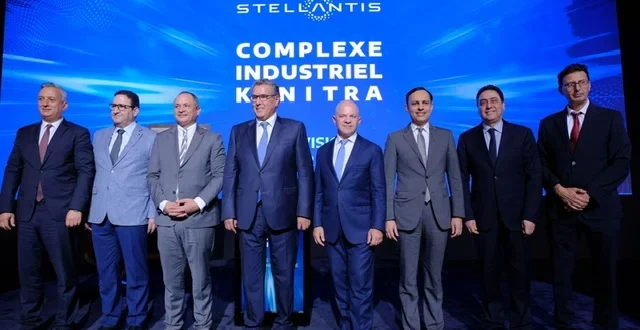Stellantis and Morocco Strengthen Industrial Partnership
Stellantis and the Moroccan government have celebrated the expansion of the Kénitra plant, marking a significant milestone in their industrial collaboration that began in 2016. This development underscores Morocco’s growing role as a strategic hub in the global automotive industry, with ambitious goals to exceed one million vehicles in annual production.
The inauguration of the Kénitra plant’s expansion represents a new chapter in the partnership, aligning with broader strategic initiatives that reinforce Morocco’s presence in the automotive sector. The project highlights the mutual commitment between Stellantis and the Moroccan government, showcasing the country’s potential as a key player in the global market.
Leadership Praises the Collaboration
At the ceremony, the Head of Government, Aziz Akhannouch, commended the collaboration as an “exemplary partnership in every sense.” He emphasized that this alliance reflects the strong industrial vision of Morocco under King Mohammed VI and demonstrates the confidence of international investors in the country as a strategic regional hub.
Industry and Trade Minister Ryad Mezzour highlighted the significance of the plant’s new capabilities, noting that its production capacity has now surpassed one million vehicles annually. He described the investment as more than just a capacity boost, but as a shared ambition that strengthens Morocco’s industrial and technological sovereignty. The increased local integration and job creation are seen as a testament to the success of “Made in Morocco” manufacturing.
Milestones Surpassed, Ambitions Raised
Samir Cherfan, Stellantis’ Chief Operating Officer for the Middle East and Africa, emphasized the strength of the relationship. He stated that since the beginning, Stellantis has exceeded its initial commitments, focusing on delivering value for Morocco.
The Kénitra plant, launched through an ambitious framework agreement, has surpassed expectations at every stage:
- Phase 1: Construction and launch of the plant, inaugurated by King Mohammed VI in June 2019.
- Phase 2: Planned capacity doubling achieved by 2020—three years ahead of schedule, reaching 200,000 vehicles annually.
Building on this momentum, Stellantis is deepening the partnership through several high-impact initiatives:
- Engine Production: 350,000 units per year, including a new generation of mild hybrid (MHEV) engines to begin assembly in May 2025. Machining will follow in November 2026.
- Micromobility: Production of the Citroën Ami, Opel Rocks-e, and Fiat Topolino has scaled up from 20,000 to 70,000 units annually as of January 2025.
- Electric Mobility: Starting July 2025, Stellantis will launch a new line of fully electric three-wheelers—designed by Moroccan engineers at the Casablanca Technical Center (ATC)—with an annual capacity of 65,000 units. The ATC team includes over 4,000 direct and indirect professionals.
Combined, the micromobility output now totals 135,000 units per year.
Morocco’s Global Automotive Ambitions by 2030
Stellantis has also begun producing electric charging stations at the Kénitra site, with a planned annual capacity of 204,000 units. This effort supports the group’s Dare Forward 2030 strategy and reflects Morocco’s push toward sustainable mobility.
The economic impact is far-reaching. By 2030, Stellantis expects to purchase over €6 billion in components from Moroccan suppliers, with local integration projected to reach 75%, further cementing the country’s position as a global automotive manufacturing hub.
Another key milestone will come in February 2026 with the launch of vehicles built on Stellantis’ Smart Car platform, which will double the plant’s core vehicle capacity from 200,000 to 400,000 units annually. Including micromobility, the site’s total capacity will hit 535,000 vehicles per year.
Social Impact and Workforce Development
The expansion also promises a significant social impact. The plant currently employs 3,500 people and is expected to add more than 3,000 new jobs in the coming years. This growth is part of a shared commitment between Stellantis and the Moroccan government to invest in workforce development and nurture local talent.
 Info Malang Raya Its All About World News
Info Malang Raya Its All About World News



